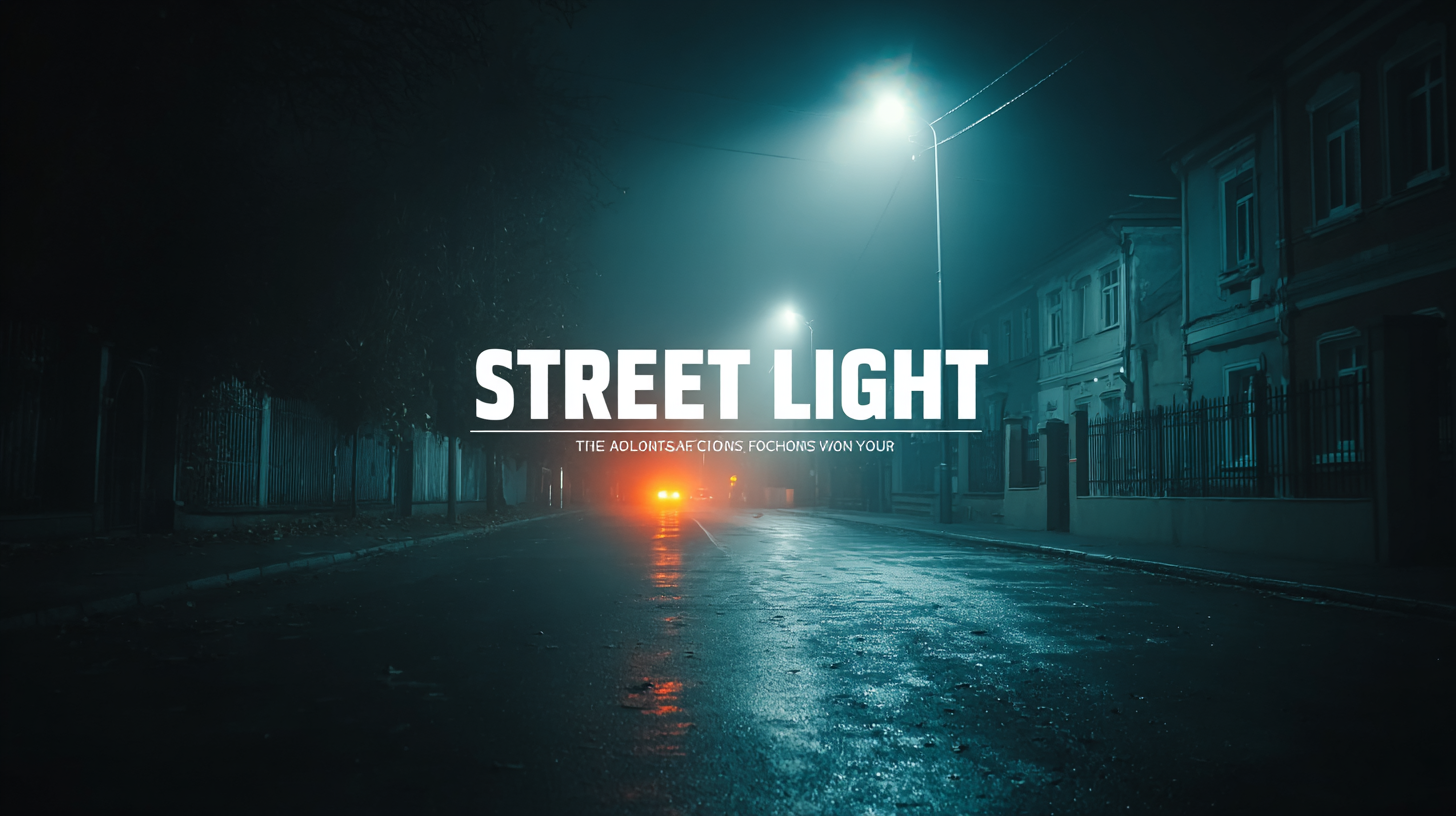Innovative Applications of Best Street Light and a Guide to Choosing Yours
In recent years, the evolution of street light technology has transformed urban landscapes while enhancing public safety and energy efficiency. According to a report by the International Energy Agency, urban street lighting accounts for up to 30% of a city’s electricity consumption, highlighting the significant potential for energy savings through innovative lighting solutions. As cities increasingly adopt smart technologies and sustainable designs, modern street lights equip urban areas with advanced features such as LED technology, intelligent sensors, and remote management systems. These innovations not only reduce energy costs but also contribute to a safer environment by improving visibility and deterring crime. This blog delves into the innovative applications of the best street lights available today, exploring their impact on urban life and providing a comprehensive guide to help you choose the right options for your needs.

Innovative Technologies Transforming Street Lighting Design
The landscape of street lighting is undergoing a significant transformation driven by innovative technologies that enhance efficiency and sustainability. According to a report by the International Energy Agency (IEA), street lighting accounts for about 19% of global electricity consumption in the public sector, creating an urgent need for integrated solutions that lower energy use. The adoption of LED technology has been at the forefront of this change, with a recent study indicating that replacing traditional street lights with LEDs can reduce energy consumption by up to 50%.
Moreover, the integration of smart technologies is revolutionizing street lighting design. The market for smart street lighting is expected to grow from $5.5 billion in 2020 to an estimated $12.5 billion by 2026, driven by the increasing demand for energy-efficient urban infrastructure. These systems utilize IoT sensors and data analytics to monitor traffic patterns and environmental conditions, allowing for adaptive lighting that adjusts in real-time, thereby enhancing safety and reducing energy waste. As cities embrace these advancements, the emphasis on environmentally friendly and cost-effective solutions will lead to a more sustainable urban future.
Key Industry Statistics: Energy Savings with LED Street Lights
Street lighting is a crucial aspect of urban infrastructure, significantly impacting both safety and energy consumption. Recent industry statistics reveal that switching to LED street lights can lead to remarkable energy savings. In fact, cities that have implemented LED technology report reductions in energy use by up to 50-70%. This not only lowers utility costs but also contributes to sustainability goals, making a compelling case for municipalities to upgrade their lighting systems.
When choosing the best street light for your needs, consider these tips: First, evaluate the lumen output appropriate for the area’s foot traffic and safety requirements. Next, assess the color temperature of the lights, as warmer tones can enhance visibility and create a welcoming environment. Lastly, don’t forget to check for smart lighting capabilities that allow for remote monitoring and energy management, which can further optimize energy savings.
Additionally, keep an eye on the long-term costs associated with maintenance and replacement. LED street lights have a longer lifespan, meaning fewer replacements and less frequent maintenance, ultimately resulting in cost savings over time. By making informed choices, cities can enhance public safety and maximize energy efficiency, leading to a brighter and more sustainable urban future.
Energy Savings with LED Street Lights
This chart compares the energy consumption of different types of street lights. As shown, LED street lights consume significantly less energy per year compared to High Pressure Sodium (HPS) and Metal Halide (MH) lights, making them a more energy-efficient choice for urban lighting solutions.
Sustainable Materials: An Eco-Friendly Approach to Street Light Manufacturing
When it comes to street light manufacturing, the growing emphasis on sustainable materials reflects a vital shift towards eco-friendly practices. Utilizing renewable resources, such as recycled metals and bioplastics, manufacturers can significantly reduce the environmental impact of street lights. These materials not only minimize waste but also lower the carbon footprint during production. By prioritizing sustainable options, cities can enhance their infrastructure while promoting an environmentally conscious image.

Furthermore, the integration of solar panels and energy-efficient LED bulbs into street light designs further bolsters the eco-friendly approach. Solar-powered street lights harness clean energy, reducing reliance on traditional power sources and decreasing electricity costs. LEDs offer longer lifespans and lower energy consumption, ensuring that street lighting remains efficient and sustainable. As communities strive for greener solutions, choosing street lights made from sustainable materials becomes a critical consideration that contributes to a more sustainable urban environment.
Smart Street Lighting: Enhancing Urban Safety and Efficiency
Smart street lighting systems are at the forefront of urban innovation, transforming the way cities illuminate their streets. These systems use advanced technologies like LED lighting, sensors, and IoT connectivity to provide not just light, but also data-driven insights that enhance urban safety and efficiency. By adapting to various conditions, such as the presence of pedestrians or vehicles, smart street lights can increase brightness when needed and dim when the streets are empty, conserving energy while maintaining safety.

Moreover, the integration of smart street lighting contributes to better urban planning and resource management. By collecting data on traffic patterns and pedestrian movements, city planners can make informed decisions on where to install additional lighting or make infrastructural changes. This not only adds to the overall safety of the area—reducing crime rates and accidents—but also fosters a more inviting atmosphere for residents and visitors alike. As cities continue to evolve, choosing the right street lighting solution becomes crucial, ensuring that urban spaces remain safe, efficient, and sustainable for all.
A Comprehensive Guide: Factors to Consider When Choosing Street Lights
When selecting street lights, several factors play a crucial role in ensuring optimal performance and energy efficiency. According to a report by the International Energy Agency, adopting LED street lighting could decrease energy consumption by up to 50% compared to traditional lighting solutions. This shift not only reduces utility costs but also diminishes maintenance expenses due to the longer lifespan of LED fixtures.
Tip: Always consider the lumens output required for your specific area. Higher lumens are necessary for large, open spaces, while lower outputs might suffice for residential areas. Additionally, the correlated color temperature (CCT) of the lights can affect visibility; a CCT of 4000K-5000K is often recommended for enhancing safety and visibility at night.
Moreover, smart street lighting systems are gaining traction, integrating sensors and IoT technology to adapt lighting based on real-time conditions. A study from the Smart Electric Power Alliance indicates that cities adopting smart lighting solutions report energy savings of 30-60%. These systems also contribute to better urban planning by enabling data collection on pedestrian traffic and environmental conditions.
Tip: Evaluate the upfront investment versus long-term savings when considering smart lighting solutions. While installation costs may be higher, the autonomy and reduced energy bills can often justify the expense over time.
